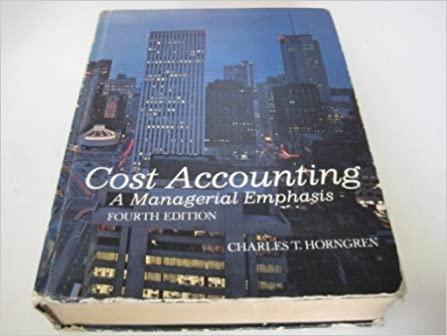Internal Audit of Inventory Differences Superfine Supermarkets is the operator of a chain of ninety-five supermarket grocery
Question:
Internal Audit of Inventory Differences Superfine Supermarkets is the operator of a chain of ninety-five supermarket grocery stores. The individual stores are the familiar supermarket type, located in community shopping centers in the outskirts of a number of large cities in the Middle West. The company makes careful studies of potential locations before establishing a unit, and in general will not give consideration to any location in which the potential first-year volume is under $500,000. The result of this policy is that each of the units is a sizable operation, with volume running from $500,000 to $1,200,000 per year.
Control of packaged grocery items follows the customary pattern of retail inventory value. The majority of products handled in the stores are ordered by the store managers from the central warehouse, where accounting control over the stores is maintained. At the time of shipment, the store inventory account is charged with the retail sales value of the shipment. Perishable products, such as dairy items, are delivered directly to stores by suppliers.
These direct deliveries are reported to the warehouse on the store report, where they are compared with billing by suppliers. On the basis of this billing, the store inventory account is charged at selling price.
When a price change is made, the store reports inventory of the products affected by the change to the warehouse, and corresponding adjustment is made in the retail inventory control value.
Fruits and vegetables are handled by a separate produce supervisor, who has authority to order according to his own judgment. Highly perishable items may be purchased locally, while semiperishables, such as potatoes and oranges, are ordered from the warehouse. In this department, the maintenance of a strict monetary control based upon units is not feasible, because much of the product is supplied in bulk for repackaging and there is considerable loss because of waste and spoilage. Consequently, inventory control over the produce department is effected by charging the produce department at cost for all shipments from the warehouse or direct purchases.’
The meat department is handled on a basis similar to the produce department. The reason for this is that the large meat items, such as a side of beef, are delivered at a single overall price per pound. The butchers in the meat department then cut the meat, with the value of the final cut depending on the desirability of the meat. There is also considerable waste in bones, fat, and similar unsalable items.
To a considerable degree, the profit of the meat and produce departments will depend on the skill of the managers. The expertness of the butchering will be a most important factor in the meat department, while skill in purchasing and anticipating requirements will be a governing factor in the profitability of the produce operations. Consequently, supervisory control over produce and meat departments is through a watch of gross margin realized from sales. So far we have been concerned with the charges to inventory controls. To summarize, packaged groceries are charged at retail, while produce and meat are charged at cost. For purposes of this problem, we will assume that all credits will come through sales (disregarding minor adjusting items such as breakage, returnable containers, and the like). Sales credits are developed when customers pass by the checking counters. The cashier-checkers, in operat- ing their cash registers, develop separate totals for the three departments.
Thus, total sales are developed separately for packaged groceries, produce, and meat. Register totals are taken each day by the store manager and re- corded on the daily report to the warehouse accounting office. Entry of these sales in the accounting records has the following results:
1. In the case of packaged groceries, total reported sales should offset original charges at retail selling price.
2. In the case of produce and meats, sales in comparison with cost will result in development of separate gross-margin figures for each of these departments.
Under company policy, internal auditors take inventories of stores every three months. Packaged-grocery inventories are taken at selling prices, so that there should be no difference if all transactions were perfectly handled, and if there had been no losses from theft by customers or for other reasons. Natu- rally, perfect operation does not exist, and it is usual to develop a shortage, which is written off at the time of inventory. In the produce and meat depart- ments, the physical inventory by auditors is used to adjust the book value, which is arrived at through applying an estimated percentage of markdown to reported sales for each accounting period.
Below are shown final figures developed as the result of three inventories of the Springfield store. In the case of the packaged grocery department, a percentage of loss (shrinkage) in relation to sales for the period is shown; in the case of produce and meat, the percentage of gross margin on sales developed as a result of the inventories is the figure given.
PACKAGED GROCERIES PRODUCE MEAT (SHRINKAGE) MARGIN MARGIN January AB% 20% 23%
April 3% over 10% 32%
July 4% short 15% 24%
One of the control records that is maintained is a comparative record of packaged grocery inventory shrinkage and produce- and meat-department margins at all stores. In checking the January inventory, you find that all the Springfield store figures are comparable with other stores and may therefore be assumed to be correct. A further factor in considering the answer to the questions is the quantity of the average inventory. In packaged groceries, it is three weeks’ sales; in produce, two days; and in meat, one week.
1. In the April inventory, what items merit immediate attention and follow-up?
What are the possible explanations for the apparent abnormalities?
2. In the July inventory, which items appear to be out of line? What would be possible explanations? lo1
Step by Step Answer:






